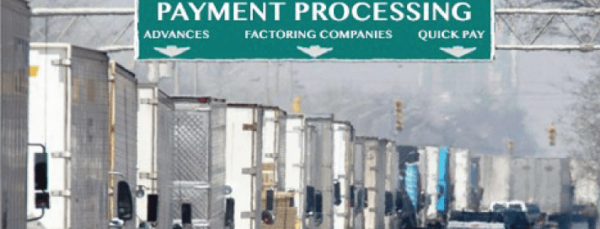Freight brokers pay carriers – that’s what you do. You do it for fuel advances and again when the load’s settled and billed. You pay when it’s due and sometimes you pay quick. You pay by fuel card, by express check, by bank draft, by paper check. And mostly you pay factoring companies – after they call to verify the load, again to check for advances and yet again to collect. You’re ready to pay the freight carriers who’ve been with you forever, the one that showed last week and the one which may still call back. You pay carriers – but is that what you do best?
New Technology Gives You More Options on Carrier Freight Payments
Large industrial firms have been outsourcing vendor payments for decades. It’s become a standard practice in medical, hospitality and government contracting. The consistent premise is to operate your business within your business systems, and to have your systems feed payment instructions to payment processors – seamlessly, safely and cost effectively. That’s the goal.
The evolution of technology integrations has also resulted in a proliferation of financial solutions. Some of these solution structures make particular sense in certain industries, not so much in others. Some providers offer credit capacity, others focus only on technology solutions. Just to make things more confusing, the terminology isn’t consistent. But overlooking the labels just a bit, we can identify three general categories of payment processing solutions. For purposes of this road map, let’s call them Dynamic Discounting, Supply Chain Finance and Virtual Card Payments. And, of course, there are combinations of the three, but let’s get started anyway – paying particular attention to what makes sense in for-hire transportation.
Dynamic Discounting Between a Freight Broker & Carrier
The simplest form of payment processing involves an arrangement between a buyer (such as a freight broker) and vendor (carrier) whereby payment for goods or services is made early in return for a reduced price or discount. Dynamic Discounting has been primarily a technology service offer with the following characteristics:
- Transaction unchanged between buyer and vendor
- Servicer may or may not provide credit or liquidity
- When credit is provided, it’s most typically in the form of a loan structure (to buyer)
- Often combined with other tech-based services, such as freight bill auditing
We haven’t seen huge impact of Dynamic Discounting in the trucking space, largely because of the complexity. Most truckers are happy with two payment terms: standard and quick. The market saturation of factoring companies has probably simplified quick pay requirements as well.
Supply Chain Finance
Often called “Reverse Factoring”, the basic premise is that buyers (freight brokers) can become more attractive to their vendors (carriers) by incorporating working capital options from the onset. Unlike traditional factoring, where carriers sell their accounts receivable, reverse factoring is a financing solution initiated by the broker to help its carriers to finance their open accounts more easily and at a lower cost than what would normally or otherwise be available. In Europe, where factoring is more prominent than in the U.S., Supply Chain Finance has become more prevalently adopted than traditional factoring. Characteristics include:
- Cost benefits to both buyer and vendor
- Proactive alternative to “Factor Fatigue”
- Optimal in markets where buyers deal with a large number of small vendors and can rely upon the payment processor to minimize onboarding costs
Our company’s payment processing platform, which we call TriumphPay, is a form of Reverse Factoring or Supply Chain Finance. There are a few other very good products coming to the transportation intermediary market in this style as well. From a broker’s perspective, the quality of the carrier experience, and consequently their rate of adoption, will largely drive the cost saving benefits to be realized.
Virtual Card Payments
Despite several transaction models, this is a style of B2B payment processing that uses a single-use credit card number. Virtual card payments have become extremely popular in certain industries and offer distinctive advantages to buyer, including fraud deterrence and revenue opportunities. However, processing costs are transferred to vendors which has resulted in limited adoption in other industries.
- Highly controlled, buyer-centric process
- High adoption rates in stable and/or contractual vendor communities (i.e., hospitals/medical providers)
- Low adoption rates in markets with high factoring penetration
To be fair, Virtual Cards are a valuable tool to have in your payment processing toolbox. You’ll need to determine whether it’s a platform you lead with or use to supplement other transaction models.
Outlook
Payment processing options are coming. If the U.S. trucking industry is similar to other markets around the world, it will be coming quickly. But please understand, these are customized solutions that can be tailored to fit your business like a glove. The more time you invest in learning about the various structures, including their relative strengths and weaknesses, the better equipped you’ll be to make these financial products works for you.
